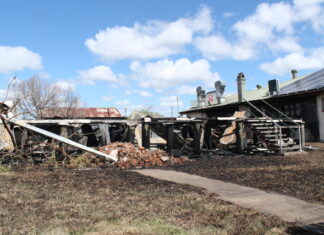 The regions power Queensland and, for that matter, Australia.
The regions power Queensland and, for that matter, Australia.
If you doubt this, have a look at what happens when there is a mining downturn or a slump in agriculture. Indeed Australia owes much of its recent economic glory to the mining boom; and agriculture has been credited with keeping Australia out of recession during the Global Financial Crisis (GFC). When everything else was in negative growth territory, agriculture continued to grow.
This means that governments must not only consider the importance of regional Queensland as the state economic powerhouse, it must actively invest in it for all of our futures; not use it as a convenient milch cow and return little of what it generates.
The Liberal National Party (LNP) adopted a resolution in July this year to invest 25 per cent of royalties into building our regions. It was based on the success of the Western Australia Program. What a success it has been.
I recently travelled to WA to see how it worked for myself. This was a necessary step to understand how it would need to be implemented in Queensland. Which by its very nature would be different, as Queensland is far more decentralised.
It is hard to find a detractor for the program in WA.
During a 45-minute one on one meeting with Liberal Premier Colin Barnett, he praised the success of the program and reiterated his strong advocacy for its continuing benefits.
He says the people of Perth think that it is only fair that people in the regions get a better deal. He said the program was delivering projects years ahead of what would otherwise be reasonably expected.
Nationals Leader and Minister for Regional Development and Lands, Brendan Grylls, was responsible for conceiving Royalties for the Regions and championing it for years before forcing its adoption by government. He is now widely recognised for delivering what has been literally a once in a lifetime opportunity for the regions.
He makes the point that the adoption of such a huge funding commitment must be accompanied by a clear policy statement about how the state’s regions must develop for the future.
For example, the government has a strong principle of decentralisation, built on a policy statement of Port Hedland and Karatha becoming super cities, points of decentralisation outside of Perth. Billions of dollars have been invested in them, building roads, housing, health, education and community facilities in preparation. Much of this has been partnered with major mining companies like BHP and other entities.
Premier Barnett and Minister Grylls both reinforced to me that the leveraging power of the program was its big delivery point, the ability to commit one million dollars and have it matched by a large mining company and even a council and deliver something meaningful, with three times the money.
Even in the areas outside of the major mining areas, other non-metropolitan communities are benefitting too, through a fund established to assist local government to invest in their communities with priority projects.
The adoption of a similar concept in Queensland would see our local government make a substantial investment in strengthening their community.
Royalties for the Regions has created a buzz in regional WA. There is a confidence in the regions that hasn’t existed for years. It is almost palpable. Royalties for the Regions is a program that embodies confidence in people and communities. People are saying that they see a real future for them and their families in regional areas. They no longer see themselves as second-class citizens.
Areas of systemic and long-term government neglect are finally being dealt with.
Billions of dollars of additional investment is being made in health and community services, education, training, roads, decentralisation strategies and broadening sustainable economic bases that reduce reliance on the resources sector and preparing for life after the minerals and energy boom.
Nothing irks people in regional areas more than to see their community turned upside down, because of resource development, when they see little real benefit. They know it is short term, with government coffers filled and squandered. Local services, like hospitals and schools bursting at the seams. Roads busier and damaged. The cost of local housing is through the roof and it is near impossible to retain local trained staff in businesses.
A dedicated program of delivering Royalties for the Regions will go some way towards fixing these issues.
Regional Queenslanders, sick of being the poor cousin, now demand even a little bit of their own back, especially when they see the mad panic politically driven investment in infrastructure in some parts of South East Queensland.
Regional Queensland is the future of the state. Regional Queensland is the state’s economic powerhouse. Their direct contributions to the state’s coffers are constantly underrated by treasury calculations on royalties and revenues from the regions.
Turn off mining, agriculture, regional tourism and the billions of dollars of resource based construction investment in the regions and see how much activity there would be in Brisbane generating stamp duty, land tax, payroll tax, etcetera. Close to zero would be the answer.
Implementation of a system of royalties for the regions for Queensland will not be the answer for everything and indeed won’t solve every problem in the regions.
It will, however, go a long way toward addressing decades of systemic neglect, build a proper foundation of decentralisation, and underpin food security and economic and social opportunity beyond our important capital city. This is crucial indeed, in view of rapid and concentrated population growth.
Story: State Member for Southern Downs Lawrence Springborg





